Everyone’s time on earth is limited, but what if your time to explore the depths of hell and save someone’s soul was also limited? Find out when you play Hell Clock, where every second matters as you try to save the soul of the Counselor.
Hell Clock is a hellish roguelike ARPG that blends some of the best of both genres. It truly finds a punishing yet rewarding balance. It has been a while since a roguelike has challenged me so much. The first time I knew I was going to beat the Matriarch, I paused the game to set up a recording. In my mind, I knew I would need to see that glorious moment over and over. It was also a great way to save my fingers from the cramps that it took to overcome the battle. But Hell Clock is more than just a roguelike or ARPG, it’s also historical fiction meets dark fantasy. Let’s take a quick trip to the history books.Â
The History That Inspired Hell Clock
The War of Canudos took place in 1896-1897 between the First Brazilian Republic and the citizens of Canudos. Why do you need to know this? Because the story of Hell Clock takes place a few years after the war. You play as Pajeú, a former enslaved person, looking to see the truth of what happened. It’s important to note that after the War of Canudos, there were likely only 150 survivors after the war. The majority of those who lived in Canudos (25,000) were massacred during the war by the Republican Army. Some of these military heads from the Republican Army will make their way into the game such as Tamarindo for all those history buffs out there. And yes, you will make your way to Canudos where battles took place.Â
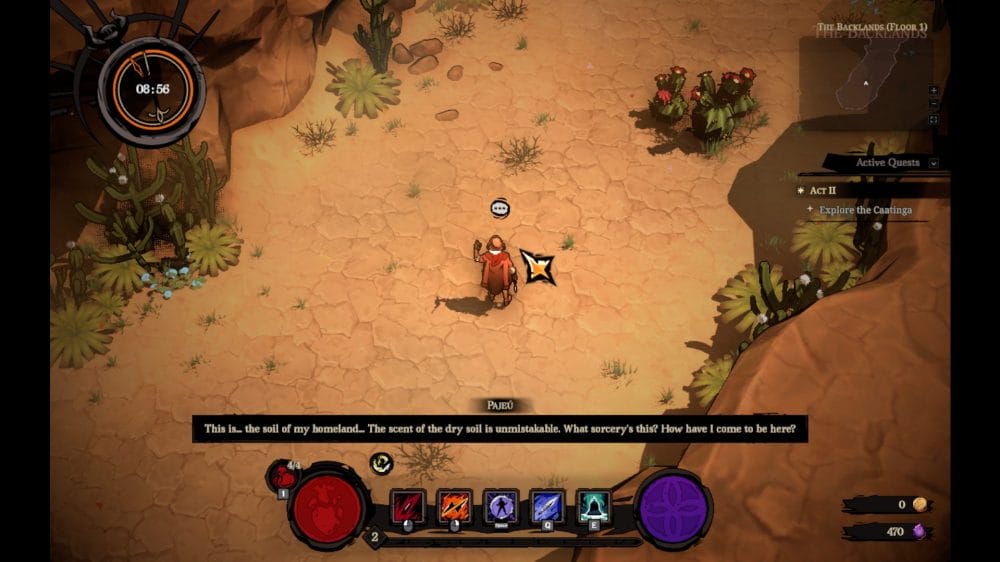
The War of Canudos was led by Antônio Conselheiro (Counselor Antonio) and João Abade. The history books say Counselor Antonio reminded people of many images of Jesus Christ. Over time, he would have followers who would follow him. His religious teachings would catch the attention of both Church and state causing an arrest. However he would continue to preach and would eventually be seen by many as a saint. Although the official church would try and fail to have him be considered a madman. His flock would grow and even be attacked by police which would lead them to running to Canudos. There he would establish a society seen by many as a refuge and possibly even an Eden. This is not the Canudos you will see in the game unfortunately. An incident over the delivery of lumber would start a war that would later inspire Hell Clock.
Enough History, We’re On The Hell Clock
While both Antonio and Abade pass away during the war, you very quickly meet Abade in your first run of Hell Clock. Once you find him, throughout act one, you’ll find him in your base of operations. While base of operations is a bit of an overestimation, it is where you’ll return at the end of each run. You have a mission in your runs, that is to find and free the soul of Counselor Antonio. Abade will help you once you free him by having a shop where you can purchase relics and equipment to help you on your next run. At least, that’s where he’ll be in act one. I was pleasantly surprised when he took a more active role later in the game, even if temporarily.Â
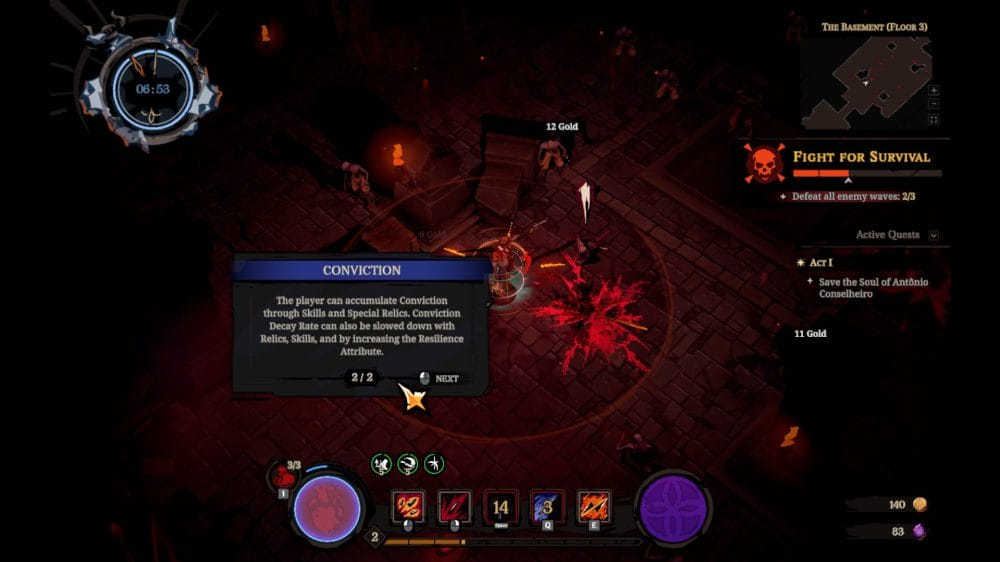
Whether Abade is there with you or not, what’s important in Hell Clock, is you have seven minutes to achieve your goal. Each run of Hell Clock truly is about 20-30 minutes. Go as far as you can before completing the run, then challenge yourself to do it better the next time. While you are exploring the dungeons you’ll have 7 minutes (unless you’ve upgraded your skill tree) but during boss battles, that timer will freeze thankfully. So while a run isn’t truly 7 minutes, if you’re hitting closer to that 30 minute mark, you may have to question what you’ve done with your equipment on the run.Â
There are three ways that you’ll be forced to start over in Hell Clock. First, you could simply run out of time on the clock and be forced to return to your home base. The second way is the way most roguelike fans are familiar with, and that is simply dropping to 0 health with no second wind or ways or staying alive available to you. The third way is of course beating all the enemies and successfully completing the run without dying.
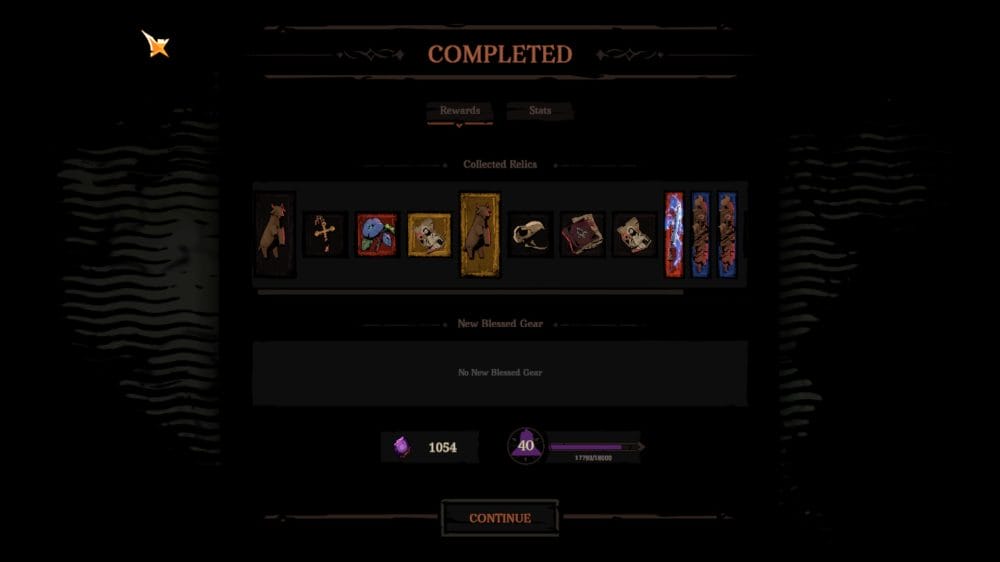
Hell Clock will also tell you that you have a specific active quest as you dive deeper into the depths. While these are a cool component, I found for the most part, this was flavor text or a reminder of what you needed to do. In Act 1, you’ll see descend into the basement or kill the head cutter. These are the goals anyway so while it was a nice way to make it feel like there were objectives, it also felt unnecessary. Act 2 it felt a bit the same. There is a quest to find a key which forced me to return to base and start over. Except I wasn’t going to be searching the map for the key. Instead, you’re completing another run, this time with a companion, who happens to have a way to help you get the key.Â
The runs themselves are quite fun if not truly addicting. Of course, it’s not all about getting in there and shooting. There’s more to Hell Clock and that includes building your own version of our hero.
Building Pajeu On A Run
While it is a roguelike, not every buff you get on the run will come back with you. There are trinkets that you’ll get while you are on your run that will only buff you during that time. These trinkets will automatically boost some of your stats, so hopefully, you find ones that match your style of play. You can always look at your character to see what trinkets you’ve found if that will change the way you plan on completing the run.
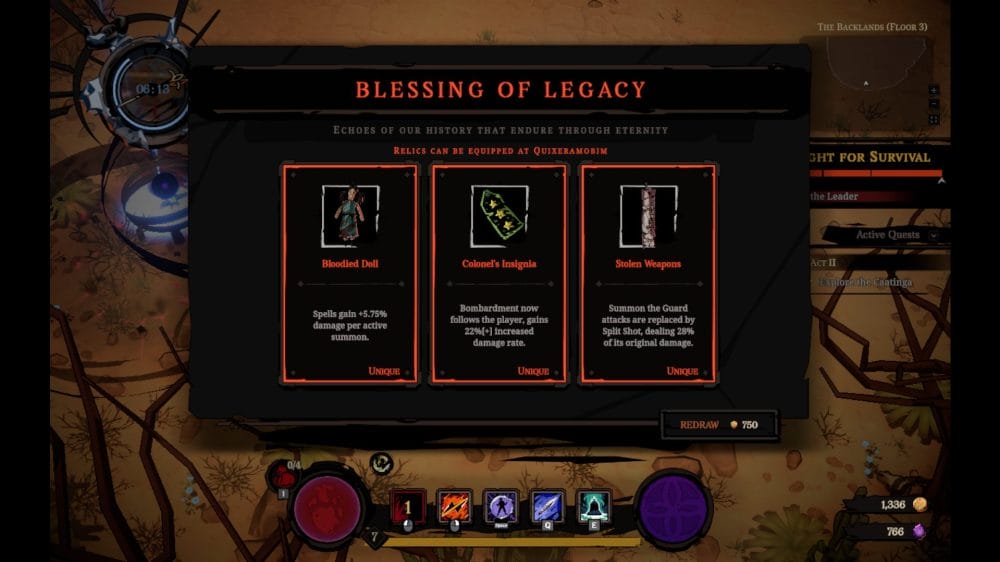
The more enemies you defeat, you’ll also get to level up. Leveling up allows you to access the blessing of Proficiency. With a Blessing of Proficiency, you’ll increase the power of the skills you’ve chosen in this run. These buffs can be game changers in a run. The number of runs that became successful because the right blessings were too many to count.
Along the way in your runs, you’ll also find different statues that will provide you additional blessings. With Blessing of Foundation, you can purchase stat boosts. With Blessing of the Legacy, you can find relics to take back for a future run. While the Blessing of the Legacy is great to get, at times I thought this was slightly out of place as the rest of these blessings feel like they are there for the run and these others would be helpful in the future. Not a big issue, I just almost wished all the statues would be a blessing for the current run.Â
Building Pajeu at Base
Of course, being actively on the run isn’t the only way to boost Pajeu. After your first run, you’ll want to then begin building out your version of Pajeú. There are a few ways you’ll do this. Pajeu can upgrade his skill tree on the bell, purchase items from Abade, change your skills with the skill book, and choose the relics you take within you on your run.
Starting with the skill book, you’ll see that you have a few starting skills to choose from. There are also spaces for skills you will be able to learn in future acts. At the start of an act, you’ll see skills become available for unlocking. However, to unlock the final skill, you’ll need to complete the act. Mix and match skills from the acts to find the build that works best for you. Once you know the skills you want to use, view your relic options.
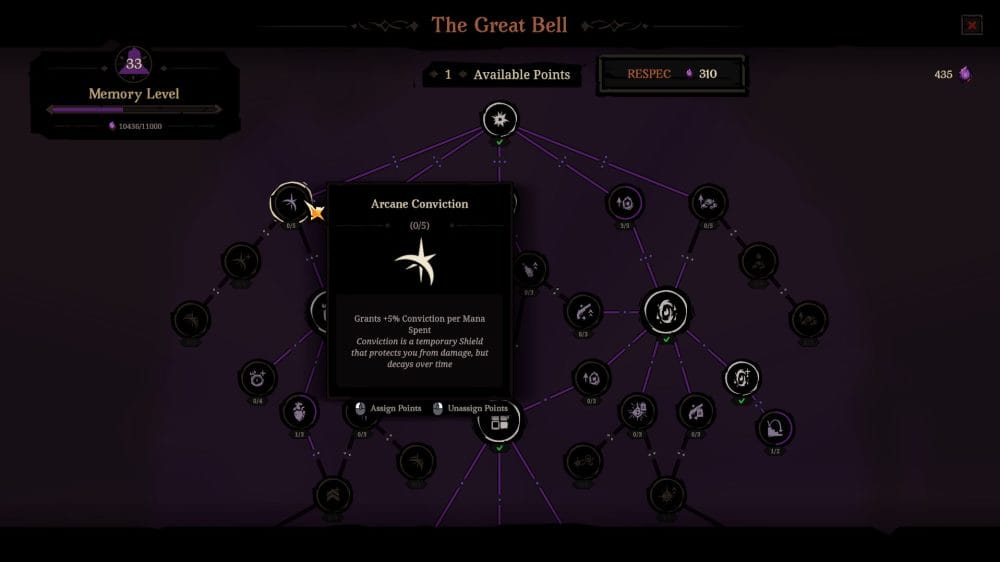
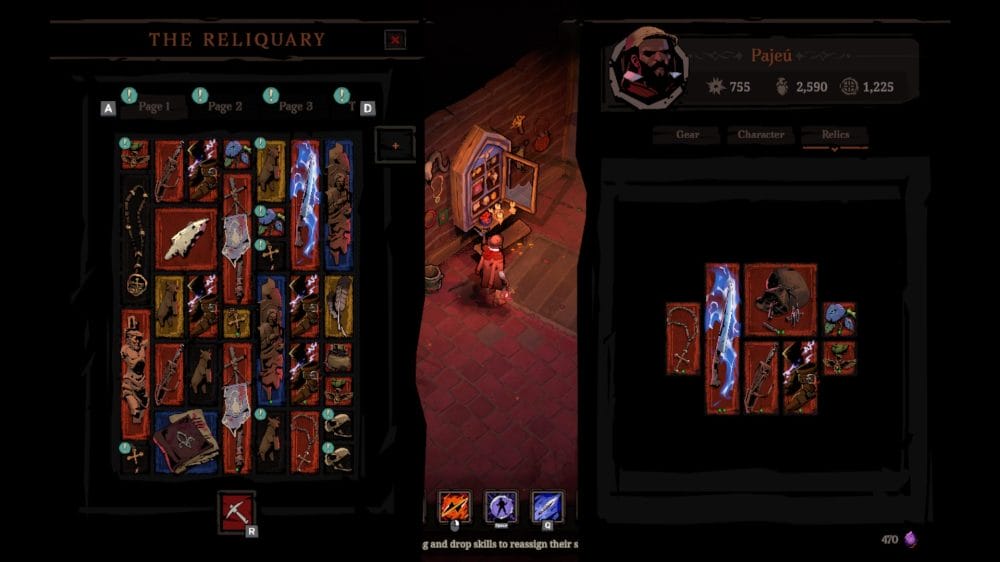
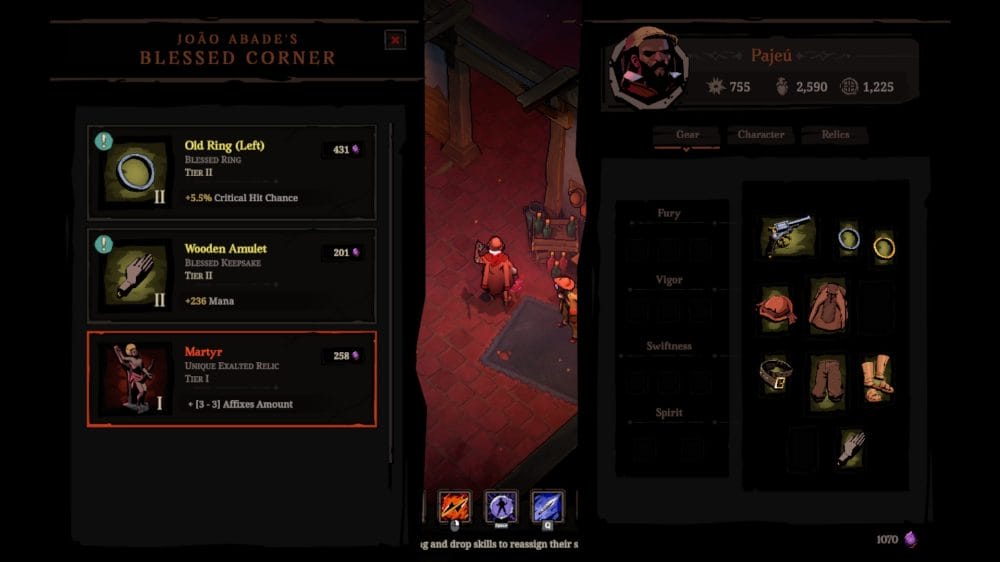
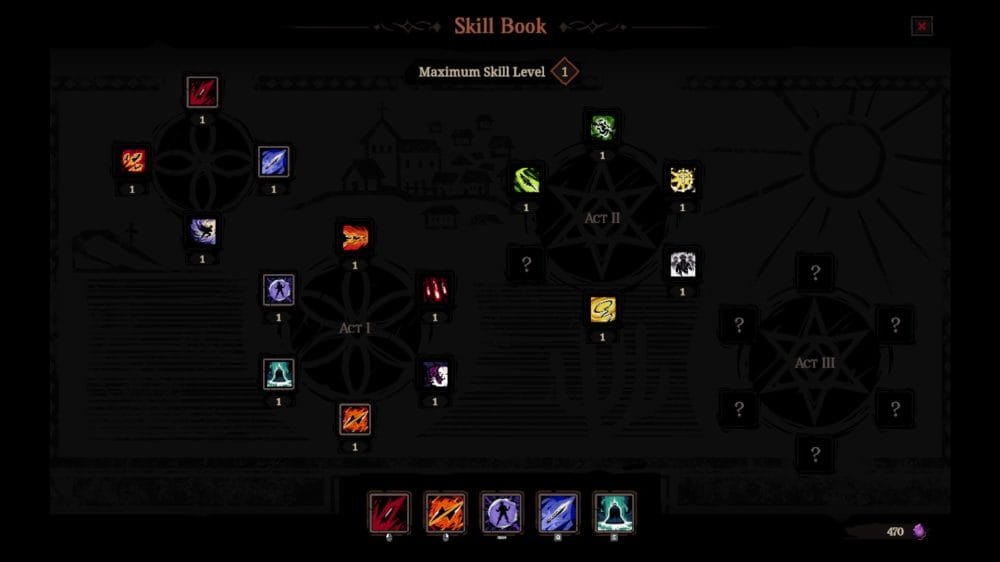
You can purchase relics or find them on your previous runs. Choose relics that match your chosen skills if you can to maximize your output. You can also upgrade your relics although some of these are quite expensive. It also isn’t a guarantee of how good the upgrade will be. There are multiple versions of the same relic with different stats so you’ll want to take a close look at these. If you find relics you don’t plan on using, you can always recycle those to be able to upgrade others.
The Great Bell has many upgrades including the ability to increase the clock. This was something I quickly choose to make those runs a little less painless. I wanted to be able to level up on the runs while not being terrified of running out of time. Thankfully, the bell gave me two ways of doing this. You could open up the ability for red portals to skip levels, or add more time to your hell clock. Both are fantastic for ways to make your runs a bit less painless. You can also increase your base mana, health, or gold from the bell.
You can also equip different bless gear for permanent improvement to your stats at the table behind Abade. Later in the game, you’ll also have a constellation map that allows you to customize Pajeu even more. So you can really create a build that suits you, assuming you make it far enough!
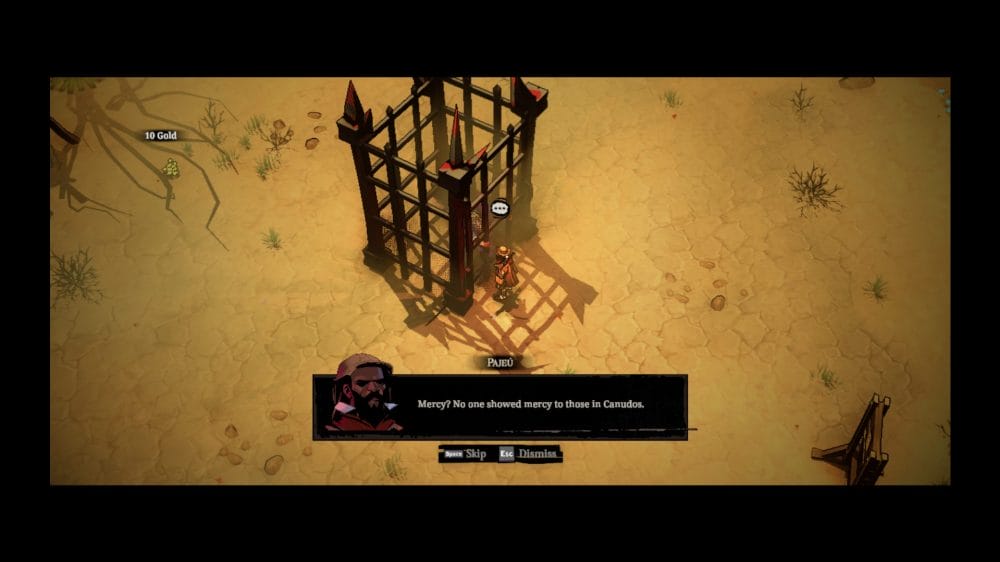
How about the atmosphere?
While the game play really shines through in the game, there is much more to Hell Clock than just the game play loop. We’ve covered the historical context, already, but it’s worth stating that you can also play with the Brazilian Portuguese voices or English dub. For the review, I played a bit with both to hear the difference. While the English voice actors are great, there is something that drives the point home hearing it in Portuguese. It truly allows one to be transported to that time and feel like we’re looking in on history as it happens.

The art style also really stood out to be as clean but with grit to it. The art during the cut scenes is haunting. It feels as though the artists were careful to respect the history and meaning of the war. The in game style in some ways falls short to the emotions the cut scenes evoke. That isn’t to say that the art is bad, far from it. The art is just much less haunting or emotion provoking during the game play. Which is good for players as that allows the focus to be on the mechanics.
What does help provide that haunting feeling to the game is the music. The sound of the gun, the corpses dying (again), the treasure chests, all set against the blend of instruments helping to tell the story really worked for me. While Supergiant may have a lock on best music in a roguelike (if that was a category), Rogue Snail are very clearly giving them a run for their money.
The Bad
So far, I’ve mentioned lots of great things, however, the game is not a perfect game. No game is perfect although some games can come close to it. There are some moments that were frustrating to say the least. Every once in a while, a potion would be stuck in a spot where I could not reach it no matter how far out I tried to get. During my time with the game, I also had two crashes, although, for as many hours as I put in, this doesn’t feel like a lot.
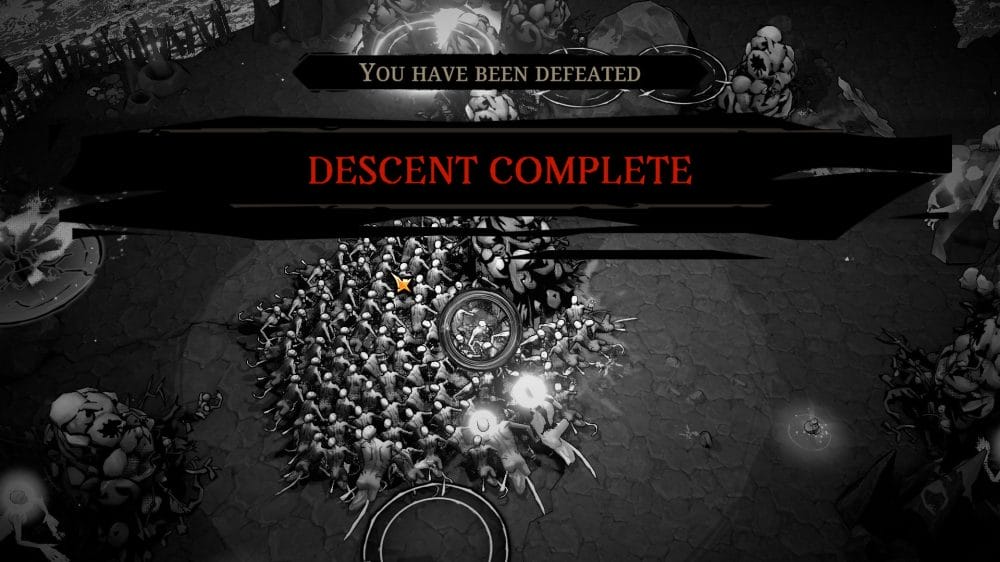
What was often frustrating was that there would be times where the loading times would feel quite long. This would usually happen after a fairly long run as if the game needed a bit more time to reset itself. Since I played on mouse and keyboard, perhaps this was intentional to allow my hands some rest. It just sometimes would feel like it’s taking me out of the groove that I worked fairly hard to achieve.
The last chief complaint that I have, is that sometimes, just sometimes, there is such a thing as too many enemies. Because so much of the game is dark to match the tone, when there are so many enemies and yourself, it’s hard to find where you are and too easy to die. Players may be used to this from other games such as Vampire Survivors and the like, but there can be such a thing as too much. It doesn’t always make the game harder either, just causes the game to chug a bit.
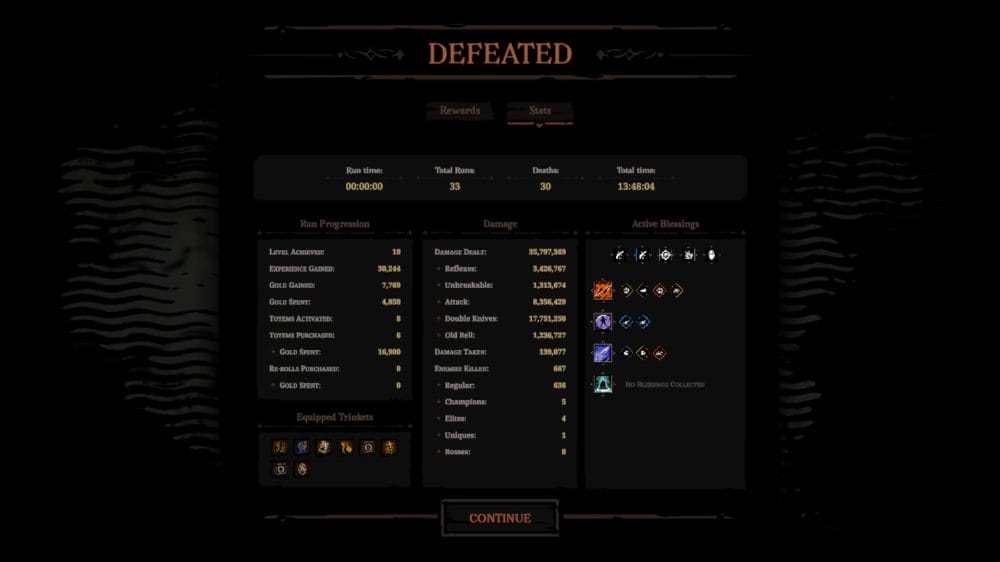
Overall
It’s very clear that a lot of care went into making a very solid game. The historical aspect gives it a lot of depth and somehow, the game never feels like it doesn’t know what it wants to be. Hell Clock finds its way as an ARPG and roguelike quite easily. It’s clear the developers at Rogue Snail had a story to tell and wanted to tell it in an approachable way. I can confirm they succeeded.
If games like Hades seem too hard to you, then you may not appreciate Hell Clock in the same way. If fast paces games are not your style, then this won’t be the game for you. However for those looking for the challenge, this is definitely the one to get. I’m quite excited to see what else, if anything, Rogue Snail has planned for Hell Clock and you should be too.

Hell Clock releases July 22, 2025 on Steam for $19.99 USD.
Thank you to Mad Mushroom for providing the code for review. Hell Clock was reviewed on Steam, at times with a controller, and at other times mouse and keyboard.





